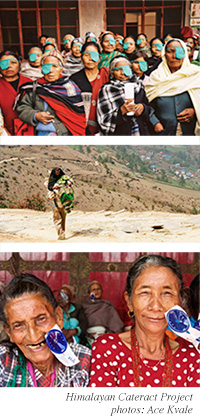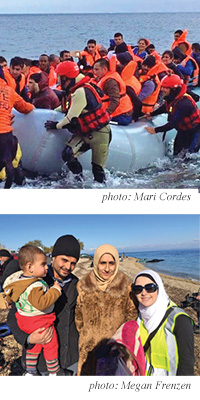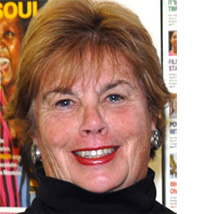Index - April, May 2016 |
|
| Groundbreaking Cataract Surgery Restores Sight to Thousands in the Third World |
| by Gail Callahan |

|
The heart and soul of the Himalayan Cataract Project, based in Waterbury, is providing high-quality, low-cost eye care to people living in some of the world’s poorest regions. In a nutshell, the group’s main mission is overcoming economic, physical, and educational barriers to help people suffering from unnecessary blindness from cataracts in countries of the developing world, among them Nepal, Ethiopia, Ghana, Bhutan, India, Myanmar, and Rwanda.
The Himalayan Cataract Project (HCP) achieves this by providing equipment and educating and training local eye-care providers across Asia and sub-Saharan Africa. HCP supports a full range of ophthalmic education, from the rigorous training of surgeons to the intensive training of workers, including nurses, field staff, and community leaders. The main training facility is at the Tilgana Institute of Ophthalmology in Kathmandu, Nepal. Once trained, these local providers can continue to offer the best eye care to residents in their home nations.
To date, HCP and its global partners have screened and examined over 5.2 million patients from across 16 countries and performed more than 445,000 ophthalmic surgeries, utilizing mobile eye clinics. The project is overseen by a board of directors and has affiliated ophthalmologists and clinical advisers. HCP is largely woman powered: of the 10 employees who work in the organization, seven are women.
Continue Reading...
|
|
Vermonters Help Syrian Refugees on Lesbos |
| by Elayne Clift |

|
Megan Frenzen, a health economist, and her physician husband, Seth, are no strangers to service work following natural and man-made disasters. They have traveled to various countries, including postearthquake Haiti, to offer medical care and other assistance when crises occur.
So when the refugee crisis loomed large in Greece, Megan began researching medics working on the Greek island of Lesbos (also called Lesvos), where many refugees arrive from Turkey, to see how they could help. She located one American who had known her husband during his residency. Then she texted or called anyone she could think of who had served with her previously or who had expressed an interest in service work.
One of the first to step up was Mari Cordes, a UVM Medical Center nurse who had worked with Megan in Haiti. Another was Ruba Orfali, a Syrian American student at St. Michael’s College in Burlington, who had never volunteered for service work but who wanted to help as an interpreter. It wasn’t long before nurse-practitioner Barbara Swan was on board, too.
“It was my first medical mission,” Barbara says. “It felt surreal when I made the decision, but I love health care, and I wanted to feel like I was doing something to help.”
Continue Reading...
|
|
Publisher's Message: Star Struck |
| by Sue Gillis |

Sue Gillis
Vermont Woman Publisher
|
Ah! Springtime in Vermont! A friend recently asked me this question: What was the most beautiful thing you experienced in the last two weeks? I was stumped for a while. But then I thought of one night when I just happened to notice that the sky looked like it was simply exploding with stars, and it was so overwhelming that they seemed to speak right out loud, just to me. “Look up, look up, you ole fool. It’s us, millions and millions of us diamonds in the sky.” I knew I had found my answer.
Some of you may know that my home is on its own point at the edge of an open meadow, far away from the noise of a busy world. The house, which was originally a “cottage getaway” for vacationing New Yorkers, was built in 1905; it is 111 years old this year. And the best part is most of it is unchanged. It is, of course, winterized, but it retains all the original flooring, ceilings, and beams, a rubble fireplace, and a wraparound screen porch.
There are spirits within these walls, too. I suspect they belong to those who lived here before me, and there were several. You will have to trust me on this: I know they are here because I can sense them from time to time, and they were particularly vocal when the house was undergoing physical change. I know that sounds batty; and as a big skeptic myself, I agree. Still there are times...
Continue Reading...
|
|
Marketing Medicine: Is UVMC’s Growth Plan Sound and Sensible? |
| by Elayne Clift |

|
A TV ad for an online print company shows a doctor marketing his boutique medical practice using the company’s services. Ubiquitous drug advertising by the pharmaceutical industry targets patients whom, it hopes, will partner with the industry in creating demand for its pills. The New York Times runs a piece on “how advertising promotes expensive drugs and treatment you may not need” (“Ask Your Doctor if This Ad Is Right for You,” February 27, 2016) and asks whether “hospitals and drug companies are targeting the well-insured,” while pointing out that medical-related ads have become a billion-dollar industry. As mega-medical centers proliferate, consumers may reasonably ask if health care is becoming a product instead of a service.
Against this backdrop, and amid growing concern about the direction and cost of health care in this country, the University of Vermont Health Network, a four-hospital partnership led by the University of Vermont Medical Center (UVMC), recently announced “a public awareness campaign” aimed at introducing its combined services and offered a “brand promise” to bring “the best of community and academic medicine together for patients” throughout Vermont and northern New York.
Along with this four-hospital partnership—which includes Central Vermont Medical Center, in Berlin, and two hospitals in New York—UVMC has also developed a growth plan for its Burlington facilities. It’s an ambitious long-term plan that could cause some consumers and their advocates to wonder if medical centers generally, and UVMC specifically, are becoming “too big to fail”—or be held accountable for their expansion or expenditures.
Continue Reading...
|
|
| Painting in Vermont’s Plein Air |
| by Cynthia Close |
Vermont’s mountains, lakes, and picturesque farmland have lured artists since the early 19th century. In 2013, the Middlebury College Museum of Art presented an exhibition of little-known Vermont landscape paintings by Edward Hopper, the famed painter of New York urban life. The show included references to similar work by his wife, Jo (Josephine Verstille Nivison), who was also an artist. The documentation accompanying the exhibition described how they would drive around the back roads of Vermont during their summer vacations between 1927 and 1938 looking for scenes to paint. When they found a spot that interested them, they would park their roadster, and Hopper would usually paint the view from the backseat where he had more legroom to stretch out his six-foot-five frame, while his wife sat and painted in the front.
The French term plein air literally means “open air” or the outdoors and has evolved to suggest painting directly from nature. Historically, we can trace plein air to French artists Nicolas Poussin and Jean-Baptiste-Camille Corot, who painted in Rome in the 17th and 18th centuries. Today, it is the continued popularity of impressionists like Claude Monet and Pierre-August Renoir, who came on the scene in the late 19th century, along with their female counterparts Berthe Morisot and Mary Cassatt, who we most associate with the atmosphere and fresh, bold color achieved by painting in natural light.
Continue Reading...
|

|
|
Vermont Energy Education Programs Gets Women into STEM |
 |
| by Elayne Clift |
They sit in a semicircle, fully attentive. Some wear hijab, looking like Botticelli-painted nuns. Others reveal their hair, perhaps a headscarf wrapped loosely around their necks. Some are married and mothers; some are single. One is a foreign student earning her PhD studying art as social commentary among Middle Eastern women. A few are struggling to find their way to feminism in a Middle East context, while others celebrate their arrival into the world of like-minded women. They are studying for master’s degrees at the University of Jordan in Amman, where I was invited to speak last November about the history of the women’s movement in America and beyond.
The young women gazing at me remind me of something I have known since I became engaged in, and committed to, feminism: the world is full of feminists, fledging or fully developed. They reside in every continent and community and likely have been there for a long time, although we may not have called them that in their day. They remind me, too, of women I met in Nairobi at the final UN Decade for Women conference in 1985, some who came knowing they would be severely punished when they returned home, and yet they came, 14,000 strong.
They also remind me of women I met in Beijing 10 years later at the Fourth World Conference on Women, some of whom came with male chaperones, and yet they came, 40,000 strong. They remind me of women who came to give testimony, to offer analysis through the lens of gender, to speak truth to power, to inspire and advise others.
Continue Reading...
|
|
Working with Vermont’s Pastures |

|
| by Amy Brooks Thornton |
It started with a cow raised on the expansive sloping fields of Sparrow Farm in East Montpelier. Last year, while running along the dirt road bordering the fields where the herd grazed, the sharp and muscular Worcester Range quietly dominating the backdrop, I wondered how this spectacular and locally famous view of cows on pasture rimmed by wilderness is an aesthetic to which we humans have become trained over thousands of years to appreciate. Herds of animals on pasture and the untamed wild. Domesticated food in nature. The scene resonates deep within us; we replicate it in paintings, photos, films. I’ve never seen a postcard or painting of an animal feedlot: whether or not such feedlots can solve world hunger, such an image could only be one of dystopia.
I saw a truck pulled over to the side of the road, near the cows, and stopped my run to talk to one of the owners of the herd, Adam Lane. He had an extra side to sell, and I eagerly committed—nothing like having a 18-year-old, six foot three inch athletic son to feed. And I had heard enough about the benefits of pasture-raised meat to intrigue me.
My growing knowledge of the climate impact of beef production had threatened to abort any of my future purchases of meat. But I had yet to learn commonly cited numbers comparing the lifespans of feedlot cattle to pasture-raised-and-fed or grazed beef cattle—a big factor in the climate impact calculations due to methane production.
Continue Reading...
|






